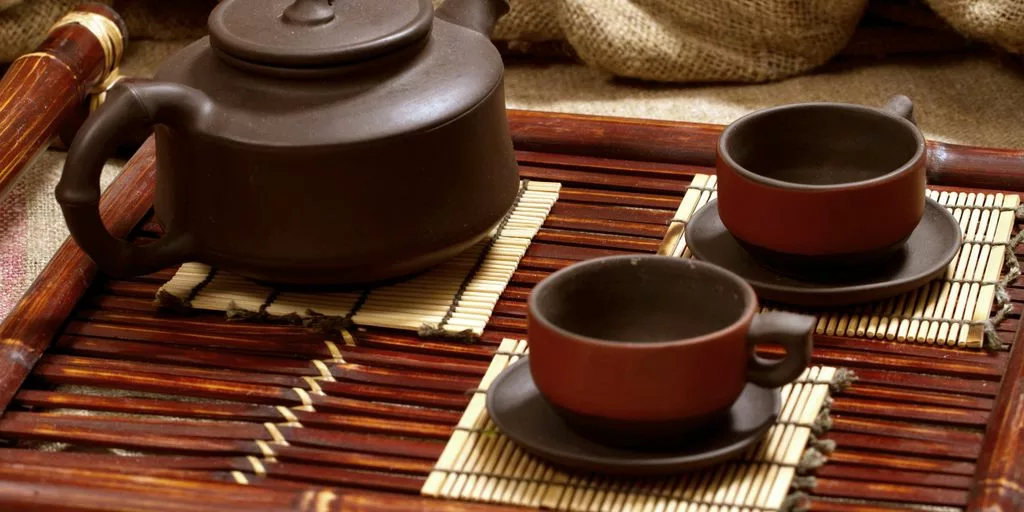
The Elegance of Traditional Japanese Clothing
Kimono and Yukata: Symbols of Grace
The kimono is perhaps the most iconic symbol of traditional Japanese clothing. This T-shaped, straight-lined robe, worn so that the hem falls to the ankle, has a rich history dating back over a thousand years. The yukata, a lighter, casual version of the kimono, is often worn during summer festivals and hot spring visits. Both garments are celebrated for their elegance and intricate designs.
The Art of Kimono Dressing
Dressing in a kimono is an art form in itself. It involves multiple layers and precise folding techniques. The obi, a wide belt, is tied in elaborate knots, each style carrying its own meaning. This meticulous process reflects the deep cultural heritage and craftsmanship of Japan.
Exploring the rich cultural heritage of Kyoto, Japan through its timeless temples and shrines. Delve into the city’s iconic sites and enduring legacy.
Modern Takes on Traditional Attire
In contemporary fashion, traditional Japanese clothing has been reimagined. Designers blend classic elements with modern styles, creating fusion wear that celebrates cultural diversity and global influences. This trend highlights the evolving nature of fashion and its role in exploring identity through the cultural crossroads of fashion.
Culinary Arts: A Journey Through Japanese Cuisine
Japanese cuisine, known as Washoku, is all about fresh ingredients, careful preparation, and beautiful presentation. Washoku is more than just food; it’s a way of life. It emphasizes harmony between nature and people, using seasonal ingredients to create balanced meals. Kaiseki Ryori, a traditional multi-course meal, is a perfect example of this philosophy. Each dish is crafted to balance flavors, textures, and colors, reflecting the season and region.
Japan’s [regional cuisines offer a gateway to experience its varied culinary heritage](https://www.secretfoodtours.com/blog/japan-food-tour/). From Hokkaido’s fresh seafood to Kansai’s street food, each area has its own unique flavors. Seasonal dishes are also a big part of Japanese cuisine. In spring, you might enjoy cherry blossom-themed sweets, while autumn brings hearty dishes made with mushrooms and chestnuts.
[The omakase experience takes diners on a culinary journey through Japanese cuisine](https://www.securethetruth.org/the-art-of-omakase-a-culinary-journey/), with the chef showcasing their skills and creativity throughout the meal.
In Japan, how food looks is just as important as how it tastes. Chefs take great care in arranging each dish to look like a piece of art. This attention to detail makes dining in Japan a feast for the eyes as well as the stomach. Whether it’s the simple elegance of sushi or the intricate beauty of a kaiseki meal, presentation plays a key role in Japanese dining.
The Spirituality of Japanese Gardens

Zen gardens are serene spaces designed for meditation and reflection. These gardens, often found in Zen temples, feature meticulously arranged rocks, gravel, and moss. They offer a tranquil escape from the bustling modern world. Visitors can explore the rich culture of Kyoto, Japan through these peaceful landscapes.
Japanese garden design emphasizes harmony and balance. Elements like water, rocks, and plants are carefully chosen and placed to create a sense of peace. The aesthetics of these gardens reflect the Japanese philosophy of finding beauty in simplicity and embracing imperfection.
Japan is home to many famous gardens that attract visitors from around the world. Some must-visit gardens include Kyoto’s Ryoanji Temple, known for its iconic rock garden, and the Golden Pavilion, which offers a stunning view of nature’s beauty. These gardens provide a glimpse into the spirituality and mindfulness that are integral to Japanese culture.
Festivals and Celebrations: A Glimpse into Japanese Life
Japanese festivals and celebrations are a vibrant tapestry of tradition, spirituality, and community. These events not only mark the passage of time and seasons but also provide a window into the heart of Japanese culture, where ancient rituals and modern revelry coexist harmoniously.
The Influence of Japanese Pop Culture
Anime and manga have taken the world by storm. These vibrant art forms captivate audiences with their unique storytelling and stunning visuals. Iconic characters like Pikachu from Pokémon and Naruto from Naruto have become cultural icons, transcending borders and generations. Anime conventions, manga cafes, and cosplay events celebrate Japan’s pop culture phenomenon.
The influence of anime and manga on Western pop culture is undeniable, shaping entertainment, media, and storytelling across the globe.
J-Pop and idol culture are in vogue, decoding the boundaries of style. Explore the impact of celebrity culture, social media, and technology on fashion trends. Embrace global inspirations and sustainability in modern wardrobes. J-Pop artists like Hikaru Utada and bands like BTS have achieved international stardom, influencing music and fashion worldwide.
Japanese pop culture has a significant impact on fashion trends. Retro styles are making a comeback, influencing modern fashion. From Harajuku street style to high fashion, Japanese trends are a blast from the past, shaping modern wardrobes. The evolution and influence of global fashion explore historical roots, technological advancements, sustainability, cultural exchange, and iconic fashion movements shaping modern fashion trends globally.
The Craftsmanship of Japanese Art
The Tradition of Ikebana: Flower Arranging
Ikebana, the Japanese art of flower arranging, is more than just putting flowers in a vase. It’s a disciplined art form where nature and humanity are brought together. The practice emphasizes shape, line, and form, creating a sense of harmony and balance. Witnessing the meticulous craftsmanship behind each arrangement is truly inspiring.
The World of Japanese Pottery
Japan boasts a rich heritage of traditional arts and crafts, ranging from ceramics and pottery to textile weaving and lacquerware. Kyoto, renowned for its centuries-old craftsmanship, is home to skilled artisans preserving ancient techniques. Visitors can explore Nishijin-ori textile workshops, Kiyomizu-yaki pottery studios, and Wajima-nuri lacquerware ateliers, witnessing the meticulous craftsmanship behind each masterpiece. These artisanal traditions embody Japan’s commitment to preserving cultural heritage and fostering creativity.
Calligraphy: The Art of Beautiful Writing
One of the most iconic aspects of Japanese culture is its traditional arts. From the elegant art of tea ceremony, known as “chado,” to the delicate and intricate art of flower arrangement, known as “ikebana,” Japan has a deep appreciation for aesthetics and craftsmanship. The art of calligraphy, origami, and pottery also hold a special place in Japanese culture, showcasing the precision and elegance that is synonymous with the country.
The Harmony of Japanese Architecture
The Principles of Traditional Japanese Houses
Traditional Japanese houses are a testament to harmony. They blend seamlessly with nature, using natural materials like wood and paper. Sliding doors, known as fusuma, and tatami mats create flexible spaces that can be easily reconfigured. These homes are designed to bring the outside in, with large windows and open spaces that invite natural light and garden views.
Modern Architectural Innovations
Modern Japanese architecture is a fascinating blend of old and new. Cutting-edge skyscrapers stand alongside ancient temples, showcasing a unique fusion of tradition and innovation. Notably, Japanese architect Kengo Kuma explores the intersection of nature and the built environment, creating spaces that are both functional and beautiful. This blend of styles is a hallmark of Japanese urban landscapes.
Famous Architectural Landmarks in Japan
Japan is home to many architectural marvels. From the historic temples of Kyoto to the futuristic skyline of Tokyo, there’s something for everyone. Must-visit destinations include the serene rock gardens of Ryoan-ji, the iconic Tokyo Tower, and the innovative structures of the Roppongi Hills. Each landmark tells a story of Japan’s rich cultural heritage and its forward-thinking approach to design.
The harmony in Japanese architecture is not just about buildings; it’s about creating spaces that promote peace and balance. This philosophy is evident in every aspect of Japanese design, from the layout of a traditional tea room to the sleek lines of a modern skyscraper.
Conclusion
Japanese culture is like a beautiful quilt made of many different pieces. Each piece tells a story, from ancient traditions to modern trends. Whether it’s the peaceful tea ceremonies, the lively festivals, or the cutting-edge technology, Japan offers a unique blend of the old and the new. Exploring this culture is like opening a treasure chest full of surprises. It’s a journey that shows us how history and innovation can come together to create something truly special. So, as we wrap up our exploration, let’s remember that Japanese culture is not just something to learn about, but something to experience and enjoy.
Frequently Asked Questions
What are the main types of traditional Japanese clothing?
The main types of traditional Japanese clothing include the kimono and yukata. The kimono is often worn on special occasions, while the yukata is a lighter, casual version usually worn in the summer.
What is Washoku?
Washoku is the traditional cuisine of Japan, emphasizing seasonal ingredients, balance, and presentation. It’s a UNESCO Intangible Cultural Heritage.
What makes Japanese gardens unique?
Japanese gardens are designed to reflect nature’s beauty and often include elements like rocks, water, and carefully pruned plants. They aim to create a peaceful and contemplative space.
What are Matsuri?
Matsuri are traditional Japanese festivals, often featuring parades, music, dance, and food stalls. They are held throughout the year to celebrate various seasons and historical events.
How has Japanese pop culture influenced the world?
Japanese pop culture, including anime, manga, and J-Pop, has gained global popularity. It has influenced fashion, entertainment, and even language worldwide.
What is Ikebana?
Ikebana is the Japanese art of flower arranging. It focuses on harmony, balance, and simplicity, turning flower arrangement into a form of artistic expression.






